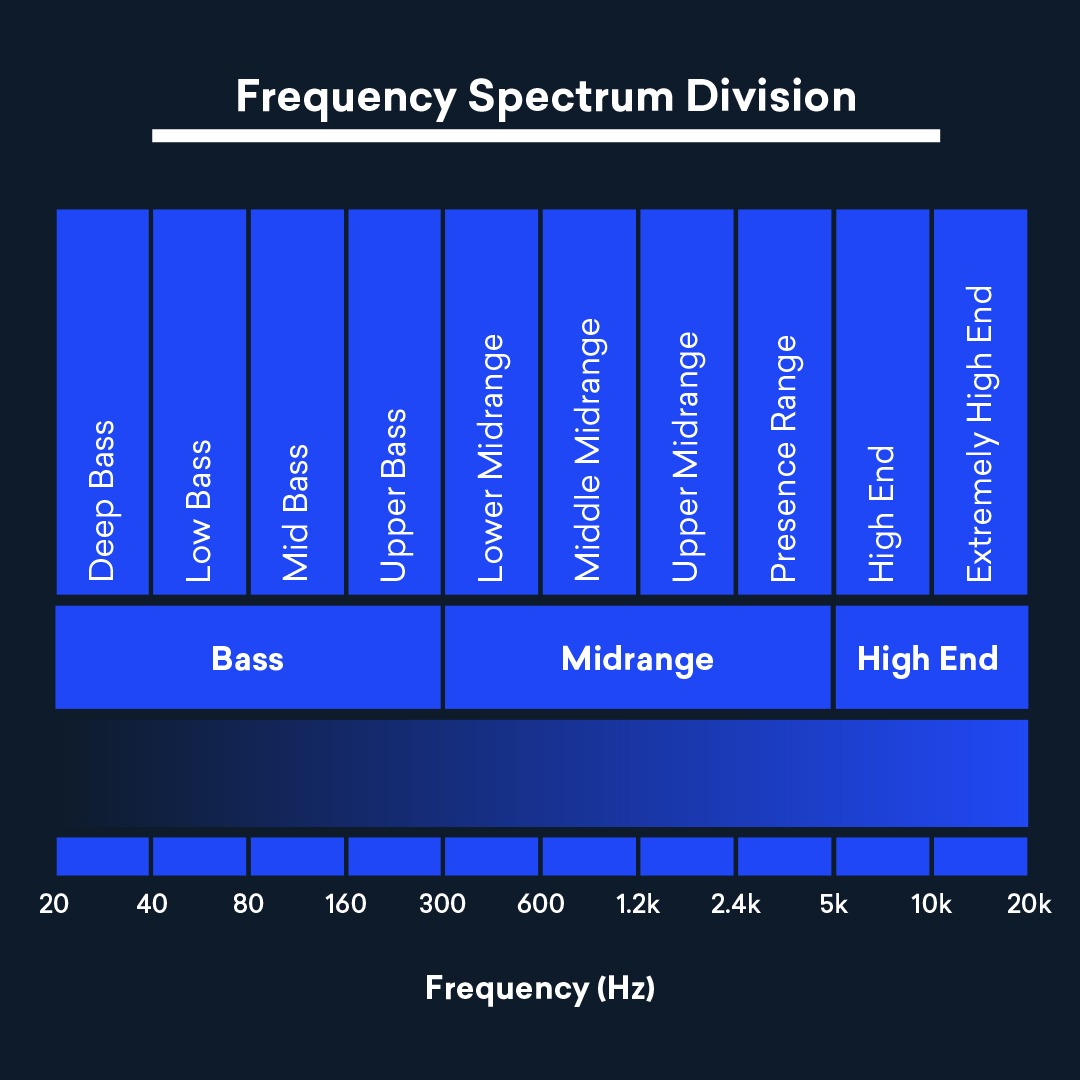Continue to discover mixing beats and how to mix 808s, vocals, and melodic parts…
Mixing 808s
The 808 bass is such a focus in most beats it deserves its personal part.
That’s because producers use 808s for everything from big sub-bass tones, to closely distorted one-shots, to delicate flutters behind the kicks and past.
Due to their sub-heavy nature, you must make some particular concerns when mixing 808s into your beat.
Sub-bass ranges
Sub-bass ranges from 16-60hz, with the bottom end being barely audible—nearer to a rumble.
Essentially the most energetic and impactful vary of sub frequencies, nonetheless, is certainly within the 30-60hz vary.
So except you’re wanting to add some rumble to your native nightclub’s sub-woofers, you could be really muddying the mix in case you increase or add an excessive amount of round these 16-30hz frequencies.
Keep in mind that in case you use 808s, you should guarantee that no other part of your mix is taking on this frequency vary.
So, roll-off everything else that may have any frequencies within the 0-60hz varies together with bass, kicks, synths, vocals, and even snares.
Primarily, everything that’s not an 808 ought to have a low go filter for sub-frequencies on it somewhere.
Duck the kick drum
A number of beatmakers prefer to layer their 808s with a kick drum. It’s an effective way to add a stubby effect behind the punch of the kick.
The issue is that your kicks and 808s will conflict if performed at a similar time, primarily canceling one another out.
The reply is to both duck the 808 or the kick drum utilizing assault instances or a sidechain compressor.
If you need a punchy kick adopted by a rumbling 808, improve the 808’s attack time. Or, if you’d like an enormous 808 with a bit of kick, improve the kick’s attack time.
Another choice that many beatmakers use is to sidechain the kick to the 808 or vice versa.
It will create an identical impact utilizing a compressor to duck the quantity of the kick or the 808 to create space for the other.
If you wish to know extra concerning the intricacies of sidechain compression we’ve written about it in other articles too.
Warming up 808s with saturation
Saturation is an effective way to add warmth and even a bit of distortion to your 808s.
It’s an excellent helpful processing method, particularly in case you’re mixing 808s to double a bassline and function a melodic component.
Saturation will add resonances at different frequencies to make a warmer, distorted sound, it additionally will have a tendency to extend the volume—making an excellent choice for including the power to a quiet 808.
Discovering the best level of saturation might be tricky for sub-heavy 808s, that’s why I like to recommend utilizing special plugins that concentrate on presets for 808s and bass sounds.
When you’re looking for bass or 808 sound design plugins, try our top favorites.
Mixing vocals and melodic parts
If drums are the canvas and texture in your beat, vocals and melodies are the colors you’ll paint on the canvas.
So ensuring to get the proper mix between bass, concord, melody, and vocal elements is essential.
We’ve written about mixing vocals and mixing samples before.
Examine your levels and panning
Much like the drum tracks, your keys, guitars, synths, and vocals all need to mix together with every part to take the right amount of space and volume.
Maintain the vocals front and center, whereas subtly panning keys and synths to the other sides—this can assist create a bit of separation between different devices.
It’s additionally customary practice to maintain bass elements centered since they have a tendency to demand extra space.
The levels you apply to the devices and vocal elements ought to be done with consideration to the way you need each part to fit into the mix.
Vocals and lead lines ought to take a front and center role. Pads, keys, and harmonies ought to fill within the background. Basslines ought to be present but not overwhelming.
Tastefully use effects and EQ to fit each part into the mix
Learn to hear with your ears, not your eyes—don’t be afraid to twiddle knobs and listen to what precisely things like EQ, saturation, compression, and filters are doing to your mix.
Most significantly, don’t work on each instrument with the solo on—you should hear it throughout the context of your whole combine.
So keep away from EQing and adding different effects without listening to the way it sounds within the wider association first.
Once more, utilizing plugins that are designed to assist with particular duties is always better than utilizing the identical inventory plugins for each instrument.
Mixing beats is all about discovering your model
Mixing beats is far more an artwork type than it’s a science—so it’s on you to give you how precisely you need your drums to sound.
Do you want a spacious, minimal combine? Experiment with EQing away low-end to skinny out your snares and kicks.
How about big lure drums and large 808s? You’ll want some saturation and a wholesome dose of reverb then.
Discovering your sound is all about experimentation, not being afraid to be taught if you don’t know particular issues, and taking dangers.


